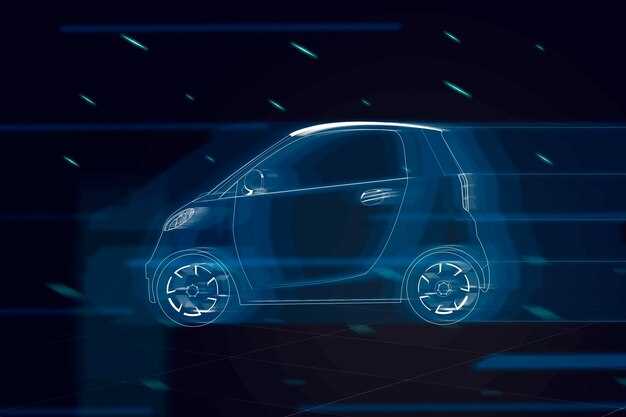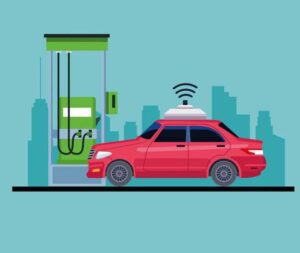Incorporating artificial intelligence into electric vehicle technology enhances performance and improves the driving experience. Implementing AI-driven algorithms allows for smarter energy management, which maximizes the battery life of electric vehicles (EVs). For instance, predictive analytics can forecast driving patterns, enabling vehicles to optimize their energy consumption based on real-time data.
Autonomous driving systems leverage AI to ensure safety, providing features such as lane-keeping assistance and adaptive cruise control. Advanced sensor integration allows vehicles to respond to their surroundings effectively. Vehicle manufacturers must prioritize AI functions that increase safety and convenience, as consumer demand continues to grow.
AI also plays a crucial role in enhancing charging infrastructure. Smart charging stations equipped with AI can analyze traffic patterns and user behavior, directing resources to high-demand areas. Investing in such technology creates a seamless charging experience for EV owners while reducing wait times.
Partnerships between tech companies and automotive manufacturers drive the innovation further. Collaborations are essential for integrating AI with hardware, providing solutions that address real-world challenges. Staying informed about these partnerships can lead to better insights into future trends in EV technology.
How Machine Learning Enhances Battery Management Systems
Incorporating machine learning into Battery Management Systems (BMS) significantly improves their performance and reliability. By analyzing real-time data, algorithms optimize charging cycles, enhancing battery lifespan and efficiency. Implementing predictive analytics allows for better estimation of battery health, enabling proactive maintenance and avoiding unexpected failures.
Recent advancements utilize supervised learning techniques to predict battery state of charge (SOC) and state of health (SOH). This ensures that energy storage systems operate within optimal parameters. Algorithms continuously learn from usage patterns, adjusting parameters for different driving conditions and user habits.
Anomalies in battery performance can indicate potential issues. Machine learning detects these irregularities through continuous monitoring, allowing for swift interventions. As a result, it minimizes risks related to battery overheating or capacity loss.
Integrating historical performance data enriches models, leading to more accurate forecasts. This insight guides manufacturers in designing batteries that meet specific requirements of electric vehicles, including durability and range. In scenarios of extreme weather, machine learning adjusts battery management strategies to maintain performance and safety.
By utilizing reinforcement learning, systems can explore multiple charging strategies, identifying the most beneficial based on a vehicle’s energy consumption. This adaptability contributes to increased autonomy and overall vehicle efficiency.
As industry leaders adopt these innovations, the synergy between machine learning and BMS paves the way for smarter, more sustainable electric vehicles. This approach not only meets consumer demands but also aligns with environmental goals.
Integrating AI for Improved Autonomous Driving in EVs
Deploy computer vision algorithms to enhance object detection and recognition systems in electric vehicles (EVs). These algorithms analyze real-time data from cameras and sensors, allowing vehicles to identify pedestrians, cyclists, and traffic signs with high accuracy.
Leverage machine learning models to predict driver behavior and surroundings. By analyzing historical driving patterns and environmental conditions, these models help anticipate actions, ensuring smoother driving experiences and improved safety.
Implement advanced simulation tools for testing autonomous driving systems. Simulations can replicate various scenarios, giving developers the ability to refine algorithms without risking real-world consequences. This approach accelerates the validation process of self-driving technology.
Utilize reinforcement learning to optimize navigation strategies. Reinforcement learning allows algorithms to adapt based on feedback from their decisions, improving route selection and energy efficiency in real-time scenarios.
Incorporate AI-assisted decision-making systems that evaluate data from multiple sources, such as online traffic conditions and vehicle diagnostics. These systems provide drivers with actionable insights, leading to enhanced situational awareness and optimal driving routes.
Adopt cloud-based AI solutions to facilitate data sharing between vehicles. This connectivity enhances fleet management, allowing EVs to communicate and share information about traffic, road conditions, and charging station availability.
Emphasize secure AI architecture to protect autonomous driving technologies from cyber threats. Regularly update security protocols and conduct thorough testing to safeguard systems against unauthorized access and vulnerabilities.
Predictive Maintenance: Reducing Downtime with AI Analytics
Implement AI-driven predictive maintenance systems to minimize vehicle downtime effectively. Monitor critical components such as batteries, electric motors, and braking systems. Real-time data analytics can identify patterns and predict potential failures before they occur.
Utilize machine learning algorithms that analyze historical performance data. These algorithms improve their accuracy over time by learning from each incident, leading to increasingly precise predictions. For example, a fleet manager can leverage AI insights to schedule maintenance proactively based on usage patterns and component wear, reducing unexpected breakdowns.
Integrate IoT sensors within electric vehicles to collect real-time data regarding performance metrics. Track temperature, vibration, and other critical indicators. This data can feed directly into your analytics platform, allowing for timely alerts. For instance, if a battery’s temperature exceeds a certain threshold, the system can notify the technician to take action before a failure occurs.
Establish a feedback loop where outcomes from maintenance actions inform future predictive models. This continuous improvement enhances maintenance scheduling and boosts vehicle performance. Regularly update your algorithms with new data to refine predictions and adapt to changing conditions or technologies.
Collaboration with AI and data analytics teams is crucial for tailoring specific models to your fleet’s unique characteristics. This partnership ensures that the predictive maintenance strategy aligns with operational goals and maximizes return on investment.
Invest in a user-friendly dashboard that visualizes maintenance insights clearly. An intuitive interface allows your team to interpret data quickly and act decisively. Empower your technicians with the insights they need to complete repairs efficiently, further minimizing vehicle downtime.
Ultimately, embracing AI-powered predictive maintenance leads to improved operational efficiency. By leveraging advanced analytics, you can enhance the reliability of electric vehicles and drive down long-term costs.
Optimizing Charging Infrastructure through AI Algorithms
Implement predictive analytics to enhance charging station deployment. AI algorithms analyze traffic patterns and EV usage data, identifying high-demand areas. This ensures stations are strategically located to minimize wait times for users.
- Real-Time Data Analysis: Utilize real-time data to dynamically adjust charging availability based on demand. AI can monitor environmental factors such as weather and local events to predict spikes in usage.
- Energy Management: Implement AI systems that optimize energy distribution. AI can forecast peak energy usage, coordinating charging schedules to take advantage of lower energy costs during off-peak hours.
- User Behavior Insights: Analyze user preferences through machine learning algorithms. Tailor charging experiences, such as payment options and loyalty programs, to enhance customer satisfaction and retention.
Leverage location data to improve the efficiency of existing stations. AI can identify underutilized chargers and recommend operational adjustments or reallocation of resources to boost efficiency.
- Collect GPS data from charging stations.
- Use AI models to assess usage trends and times.
- Optimize deployment of additional units based on findings.
Ensure regular updates to AI algorithms based on evolving user needs and technology advancements. Continuous learning enables the system to adapt to the latest trends in electric vehicle adoption and consumer behavior.
Engage in strategic partnerships to improve data sharing across networks. Cooperation between charging network providers and data analytics firms fosters innovation and leads to enhanced service quality.
AI-Driven Design Approaches for Lightweight Electric Vehicles
Utilize generative design techniques to optimize the structural integrity of your vehicle while minimizing weight. This software-driven method uses algorithms to explore a wide range of design alternatives, taking into account forces acting on the vehicle and material properties. By simulating various loads and conditions, engineers can achieve optimal outcomes that reduce material usage without compromising safety.
Implement topology optimization in the design process. This approach systematically removes unnecessary material from digital models based on functional requirements and load-bearing scenarios. By focusing on stress distribution, topology optimization can lead to lighter components, which enhance overall vehicle efficiency and range.
Utilize AI algorithms for predictive analysis to identify potential failure points in lightweight materials early in the design process. By analyzing data from previous vehicle performances and real-world scenarios, AI can suggest material enhancements or design modifications that improve durability without adding weight.
Incorporate advanced materials such as carbon fiber composites or aluminum alloys, which AI can suggest based on performance metrics and cost-effectiveness. These materials provide strength with reduced weight, making them ideal for electric vehicles, enhancing range and efficiency.
Leverage machine learning models to analyze aerodynamic characteristics during the design phase. AI can simulate airflow around the vehicle body, leading to insights on shape modifications that significantly reduce drag. Optimizing aerodynamics directly correlates to enhanced energy efficiency and battery performance.
Keen focus on modular design facilitated by AI can lead to significant weight reduction. Modular components can be easily replaced or upgraded, allowing for lightweight options in non-essential parts of the vehicle, thus maintaining a balance between functionality and overall weight.
Lastly, the integration of AI in real-time monitoring during the manufacturing phase can ensure tolerances are kept tight, minimizing excess material use. This proactive approach to quality control contributes to producing lighter, high-performance vehicles that meet stringent safety standards.
Enhancing User Experience in EVs with AI-Powered Interfaces
Integrate voice-activated controls to simplify interactions in electric vehicles (EVs). Users can access navigation, climate settings, and entertainment systems without taking their hands off the wheel or their eyes off the road. This hands-free experience significantly reduces distractions and enhances safety.
Incorporate personalized dashboards that adjust based on user preferences. AI algorithms analyze driving habits and offer tailored suggestions for efficiency, charging locations, and preferred routes. This level of customization fosters a more intuitive driving experience.
Utilize predictive analytics to inform users about vehicle performance and maintenance needs. An AI interface can prompt users about upcoming service requirements, assisting in proactive vehicle care and keeping them informed about battery health and estimated range based on their driving patterns.
Implement augmented reality (AR) features for navigation and safety. AR overlays can display route information directly on the windshield, providing users with an immersive way to navigate. This approach reduces the need for separate navigation screens and enhances awareness of surroundings.
Enhance user interaction through adaptive learning technologies. These systems evolve with the user, learning preferences over time to suggest optimized routes and charging schedules. For example, if a user typically charges at night, the system can recommend departure times to ensure the battery is at optimal levels for the morning commute.
| Feature | Benefits |
|---|---|
| Voice-Activated Controls | Minimizes distractions, enhances safety |
| Personalized Dashboards | Tailors suggestions, improves efficiency |
| Predictive Analytics | Promotes proactive maintenance, informs performance |
| Augmented Reality Navigation | Increases situational awareness, simplifies navigation |
| Adaptive Learning Technologies | Optimizes routes, enhances user convenience |
Focus on seamless integration with smart home ecosystems. Allow users to control home devices from their EV interface, enhancing convenience by enabling pre-conditioning of their homes while on the road. This integration provides a comprehensive lifestyle enhancement, making daily routines more fluid.
Lastly, enhance security features with AI by implementing biometric recognition systems. Facial recognition or fingerprint scanning can personalize the driving experience and restrict vehicle access to authorized users only, increasing safety and peace of mind for owners.







